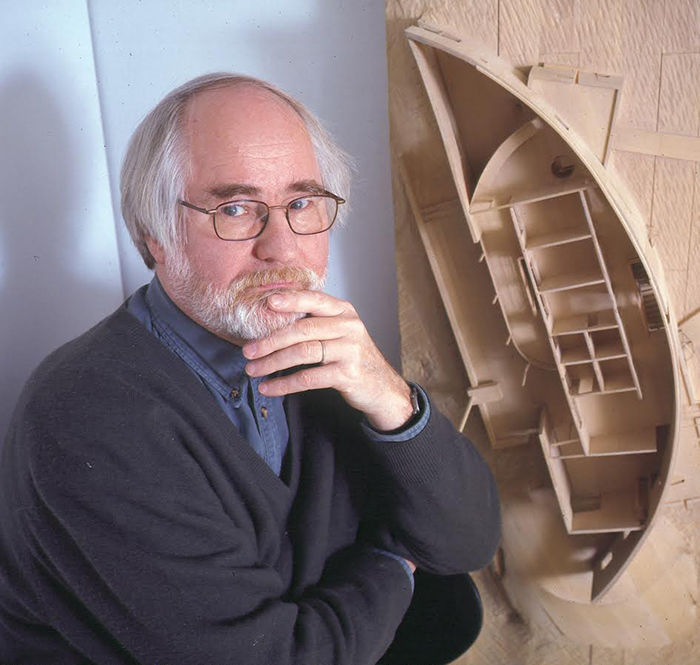
Juhani Pallasmaa is one of the most well known Finnish architects. The Finnish architect and academic Juhani Pallasmaa visited London to give a talk about his friend and colleague Tapio Wirkkala to commemorate Wirkkala’s 100th anniversary as part of the Tent Supertalk programme at September’s London Design Festival.
The Institute spoke with Pallasmaa about his views on design and Wirkkala’s life’s work.
Tapio Wirkkala was not only a designer but an artist and an artisan capable of designing buildings and objects of varying sizes. Pallasmaa described Wirkkala on his ”Master’s Hands” talk as an artisan, who mastered a wide range of techniques from drawing to glassblowing and working with wood. This specific way of working has clearly had an impact on Pallasmaa’s thoughts on design.
”Design and architecture are the same thing, only the scale is different”, Pallasmaa says.
Pallasmaa appreciates Wirkkala’s ability to design everything from the smallest of objects to architectural work and wonders why contemporary design is so divided.
”Why would someone only design lamps or do interior design but not architecture? What’s essential is the way of thinking, not the size of the object.”
Pallasmaa considers the relationship between art and architecture complicated.
”Architecture is at the same time exactly the same and entirely different than art.”
According to Pallasmaa, regardless of what is being designed, it has to have an artistic touch and therefore he often teaches architecture through art. Pallasmaa thinks both artworks and buildings should form a whole, which passes on the feeling of what it is to be a human being.
”In architecture the layers which affect the senses easily cover the more sensitive world of feelings. Therefore it is easier to talk about architecture through other forms of arts”, says Pallasmaa
Pallasmaa’s career hasn’t been limited to architecture alone since as a writer he has studied very different disciplines from film to philosophy. He has tackled topics previously unfamiliar to him - and he doesn’t write to boast how much he knows about a subject, but to learn.
“Books are the reports of my own personal research projects.”
Pallasmaa regards craftsmanship as a part of a designer’s work and believes that as human handprint disappears from design work, architecture suffers as well. Drawing and working the material are important skills for a designer or an architect, he feels. For example, an excellent knowledge of materials is needed in order to know what type of plans are possible. Pallasmaa says that he experiences the design process very physically.
“I can tell if the work is finished by how I feel, good or bad.”
Global design trends define modern architecture. Pallasmaa says that top architects today are international and designing is no longer tied down to time or culture. Pallasmaa’s career has been international and he has travelled around the world 86 times. His literary works have been translated to over 30 languages. However, he feels being a Finn has always been visible in his work.
“I am still a Finnish boy from Tavastia.”
Pallasmaa has never felt it is his obligation to be Finland’s representative internationally, but he thinks that it is not possible to completely avoid the role. He describes Finnish design and a way of doing things as sensible, realistic and critical.
“My Finnish heritage is apparent simply because life experiences reflect the person”, he concludes.
